msFineAnalysis AI provides a new structure analysis tool for unknowns. It has been specifically designed to be used in conjunction with the JEOL JMST2000GC “AccuTOF™ GC-Alpha.” This next-generation software provides this structure analysis capability to enhance the entire automatic qualitative analysis functionality already available on the company's previous generation of msFineAnalysis.
The new so-called “integrated analysis” integrates GC/EI high-resolution data, GC/soft ionization high-resolution data, and “structure analysis” with the help of two AIs (Main AI and Support AI).
Such advanced AI technologies enable msFineAnalysis AI to offer a special automatic structure analysis capability that was not previously available for GC-MS qualitative analysis.
Features
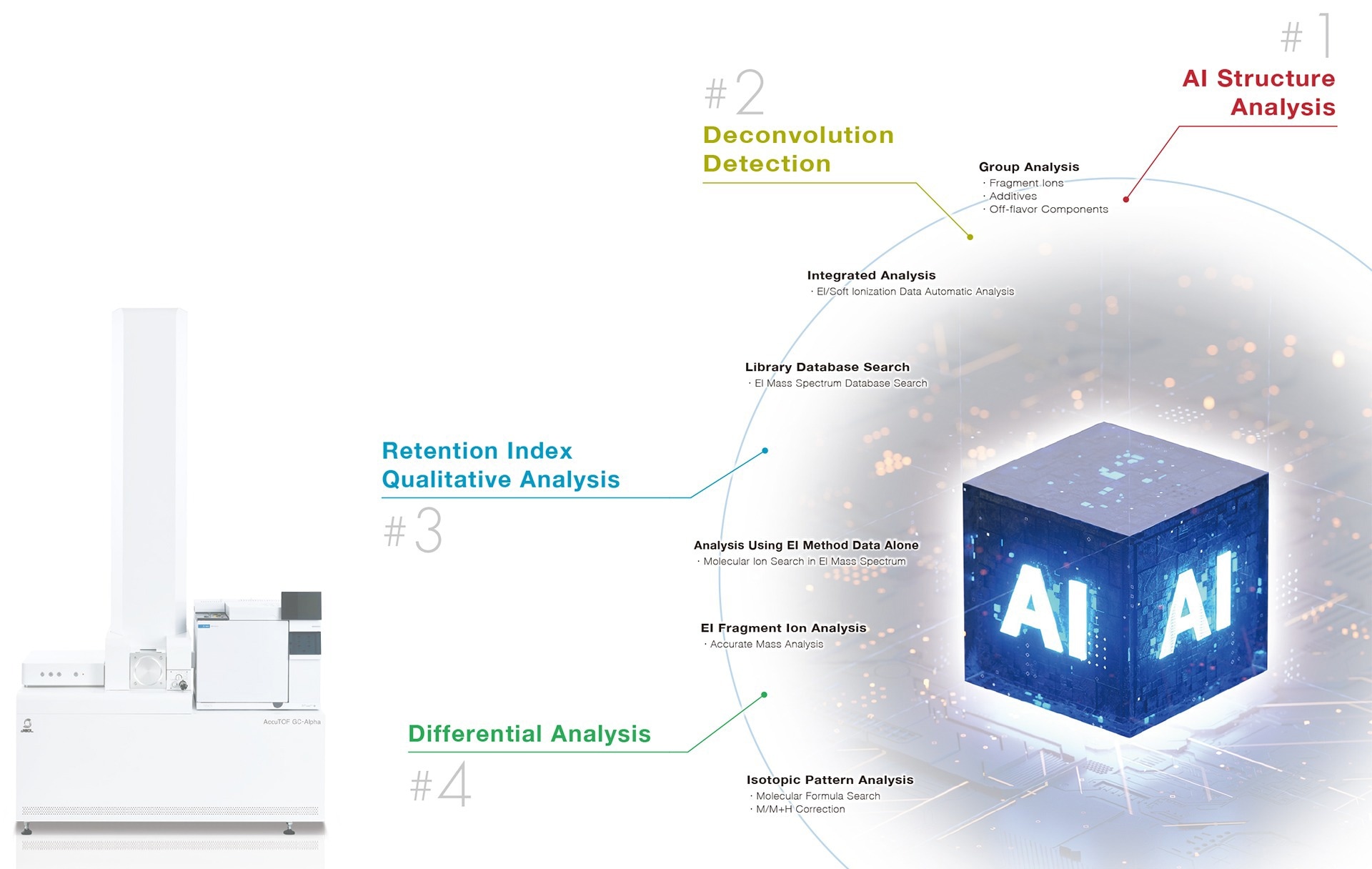
Image Credit: JEOL USA, Inc
#1 AI Structure Analysis
Evolving Innovative Solutions: From Molecular Formula Estimation to Structural Formula Prediction for Unknown Compounds
For an unknown compound that has not been registered in a library database (▼), the traditional msFineAnalysis algorithms automatically indicate a molecular formula. To take it a step further, msFineAnalysis AI allows the automatic prediction of structures for all components that have been detected.

Image Credit: JEOL USA, Inc
The Need for Soft Ionization: Reliable Acquisition of Molecular Formula Information is the First Step in Structure Analysis
EI mass spectral data has been utilized for library databases, so EI methods are extensively utilized for the qualitative analysis of GC-MS samples. Yet, as EI is a hard ionization technique, several fragment ions have been noted, and in several cases, it is not unusual to observe minimal or no signal for the molecular ions.
In addition, when it comes to unknown substances that have not been registered in a library database, it can be difficult to distinguish whether the largest observed m/z is actually the molecular ion or just a fragment ion using the EI mass spectra alone. In these cases, a soft ionization technique can be an effective tool for determining this information.
A range of soft ionization techniques, such as FI, PI, and CI are optionally available with the AccuTOF™ GC-Alpha system. These methods are key to helping to distinguish ions (e.g. molecular ions and protonated molecules) that offer information on the molecular weight that then makes it possible to precisely identify the molecular formula information for components that were originally unknown.
Just as information based on the molecular formula is a crucial starting point for AI structure analysis, soft ionization is vital when it comes to identifying unknown compounds.
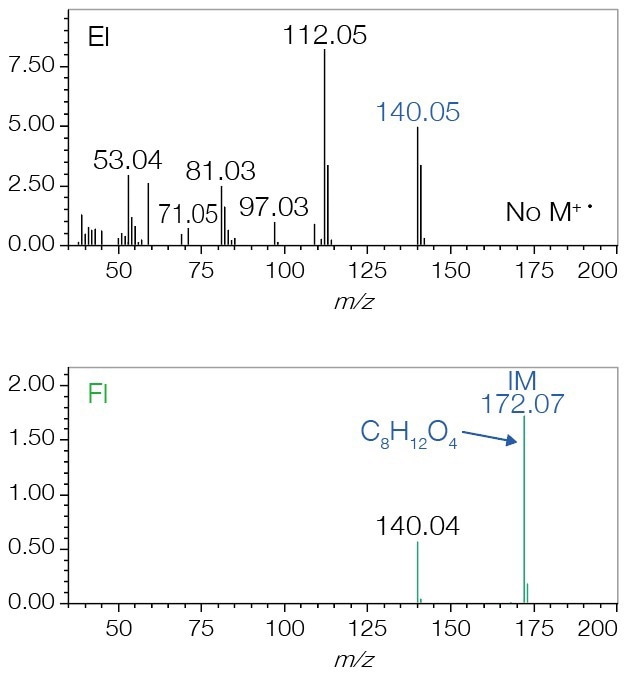
Mass spectrum of component not registered in library. Image Credit: JEOL USA, Inc
Manual Structure Analysis by Skilled Analyst vs. AI Automatic Structure Analysis
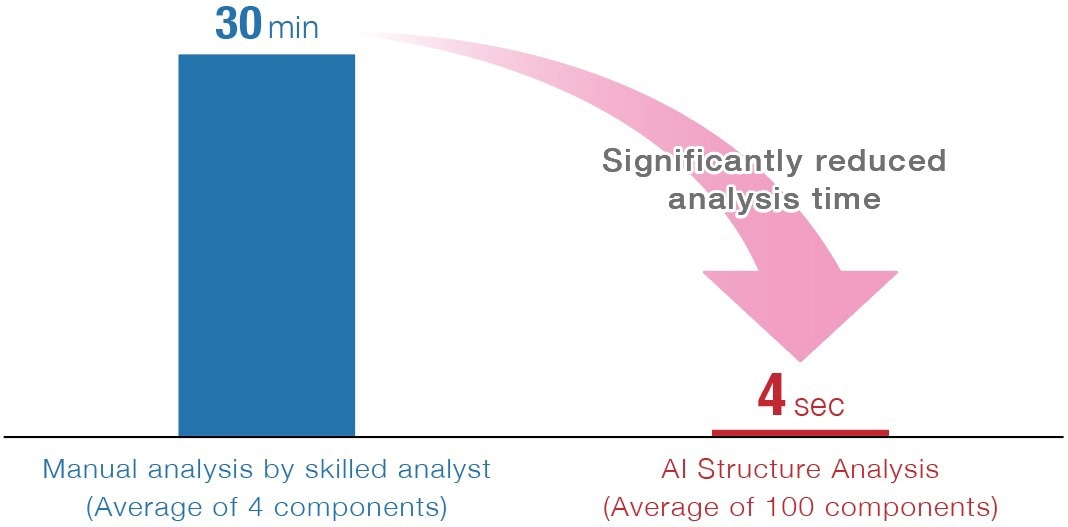
Image Credit: JEOL USA, Inc
※Measured with JMS-T2000GC Standard Configuration PC
The time needed for structure analysis was compared for all compounds found in an acrylic resin measured by Py-GC-TOFMS and were not registered in the NIST library database.
Even an analyst with over thirty years of experience in the field of mass spectrometry required approximately two hours to analyze the structure of four components, which is 30 minutes per component. On the other hand, however, AI structure analysis completed 100 components in less than seven minutes, which is four seconds a component.
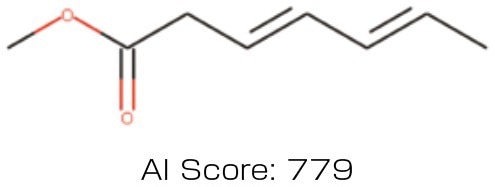
Image Credit: JEOL USA, Inc
The above AI structure analysis score (similarity) between the structural formula was determined by a skilled analyst and the correct structural formula, suggesting that the structural formula is likely to have been predicted with strong similarity.
Automatic Structure Analysis Using Two AIs: Stable Structure Analysis Without the Need for an Online Environment
msFineAnalysis AI provides an automated structure analysis function.
msFineAnalysis AI provides candidate structural formulas even for components that are not registered in the library database, using two newly developed AI models based on the structural formula information of more than 100 million organic compounds recognized in the world and calculations.
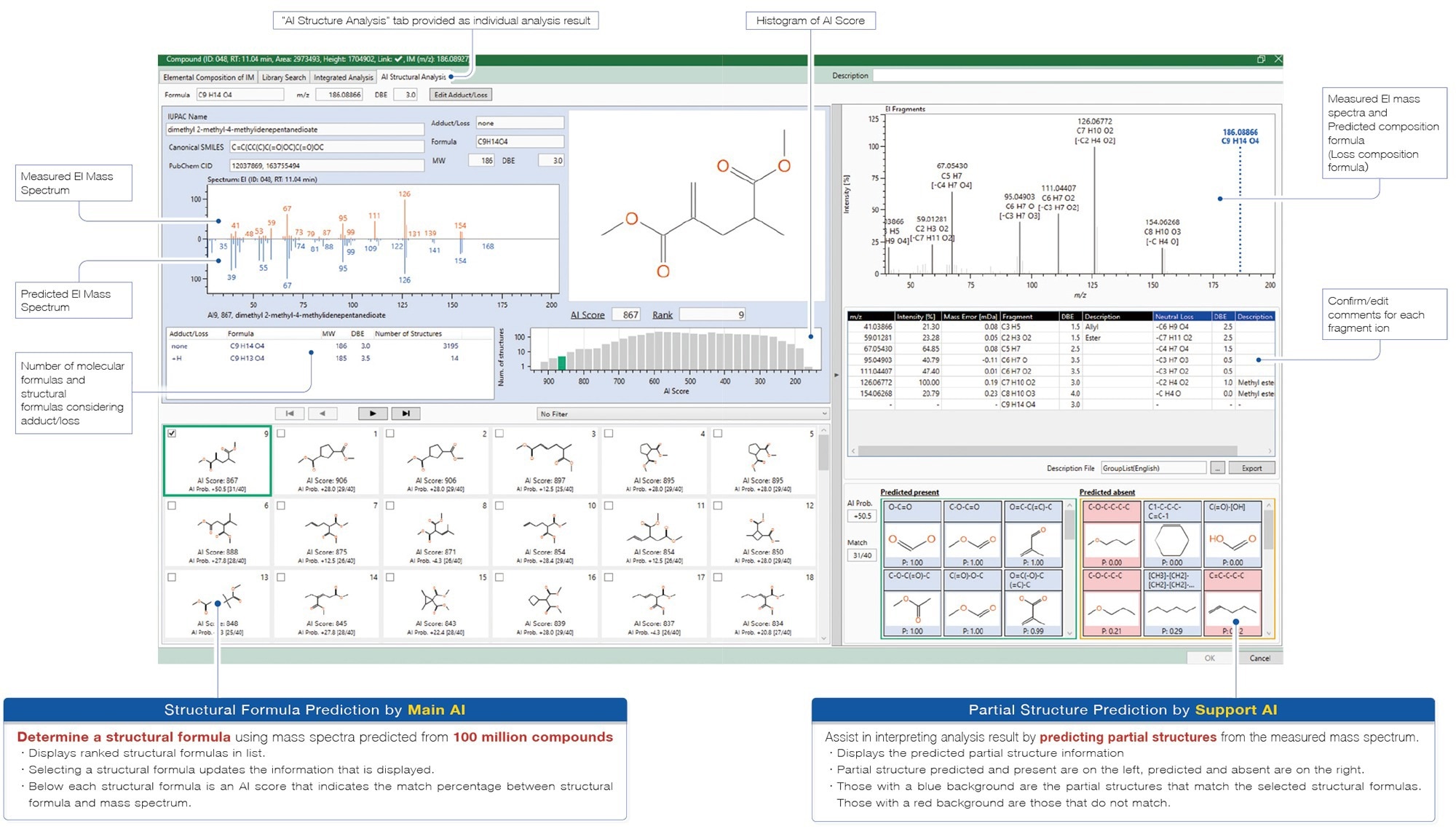
Image Credit: JEOL USA, Inc
AI Structure Analysis Prediction Accuracy
The NIST20 library database has been utilized by the Main AI employed in AI structure analysis used for learning and evaluation.
The prediction accuracy tests verified that the proper structure was in the top 1% for 73% of the compounds and in the top 10% for 93% of the compounds.
Structures with a similar composition formula to the target compounds (14581) are prepared via PubChem. The rank order of the proper structure has been verified among them.
Of the 14581 verified compounds, the correct structure was achieved within the top 1% rank order in 73% (10644 compounds).
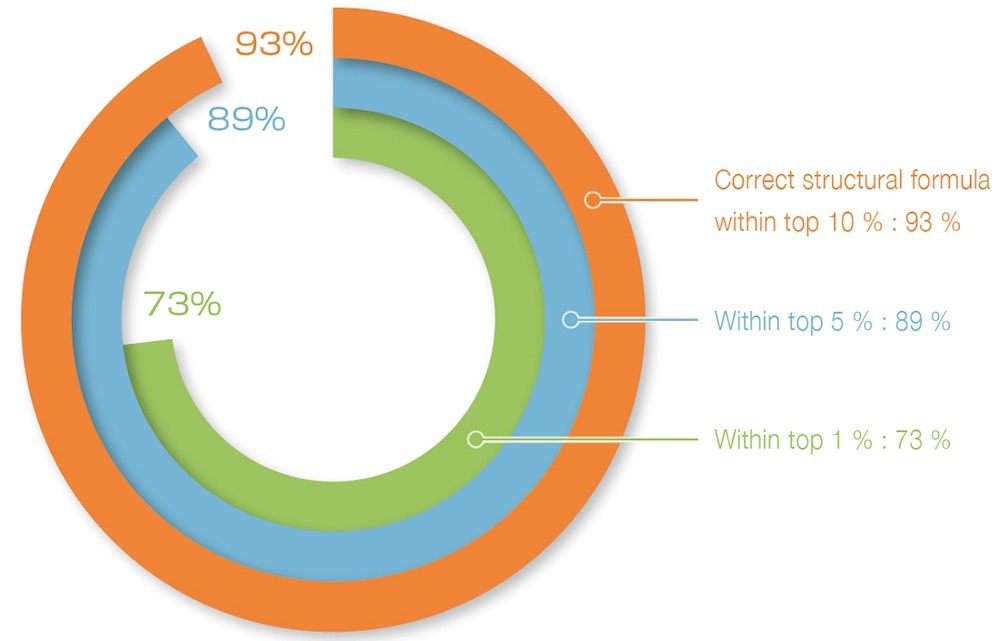
Correct structural formula ranking in 14681 compounds. Image Credit: JEOL USA, Inc
Six known compounds not registered in the NIST20 library database were subsequently examined, and the proper structure was ranked the highest for the three compounds.
For the leftover compounds, the top structures listed in the structure analysis results have all shared identical features with the correct formula.
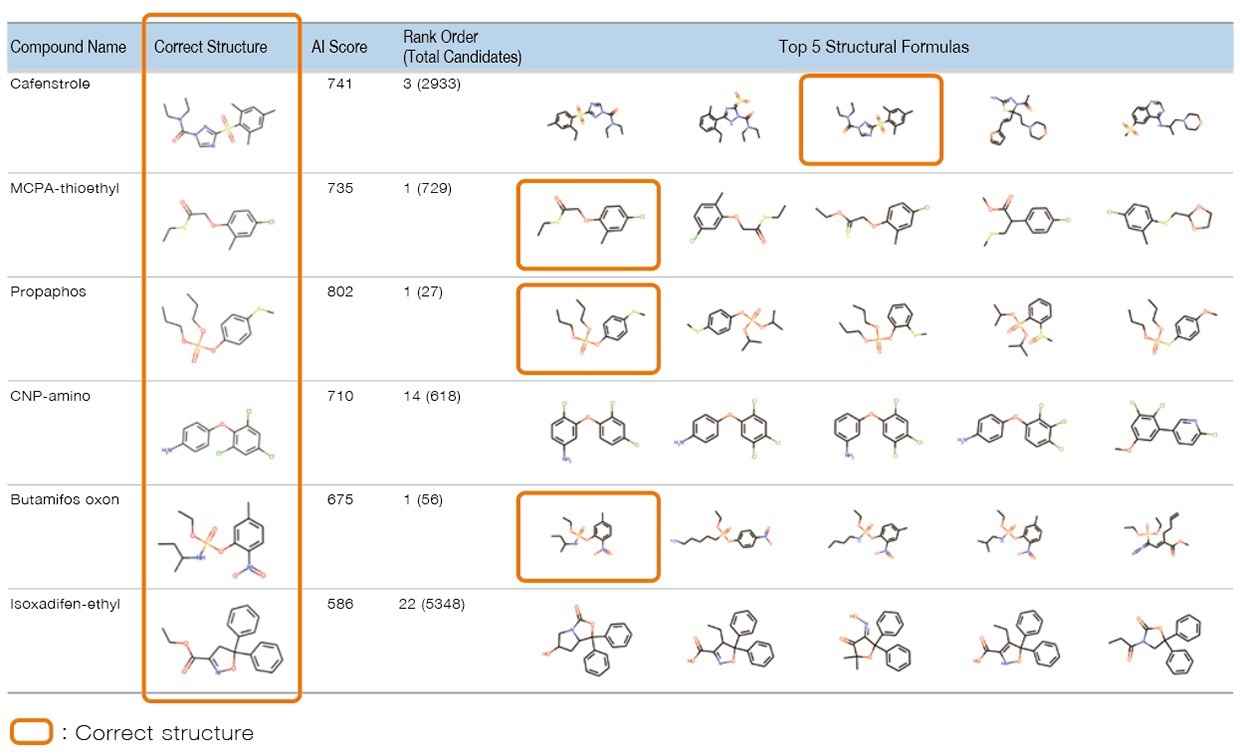
Image Credit: JEOL USA, Inc
AI Structure Analysis Application
The AI structure analysis outcomes for an acrylic resin quantified by Py-GC-HRTOFMS are displayed below.
For the 20 compounds that consisted of structures that could not be verified with the NIST20 library database, AI structure analysis was executed after identifying their molecular formula via integrated analysis.
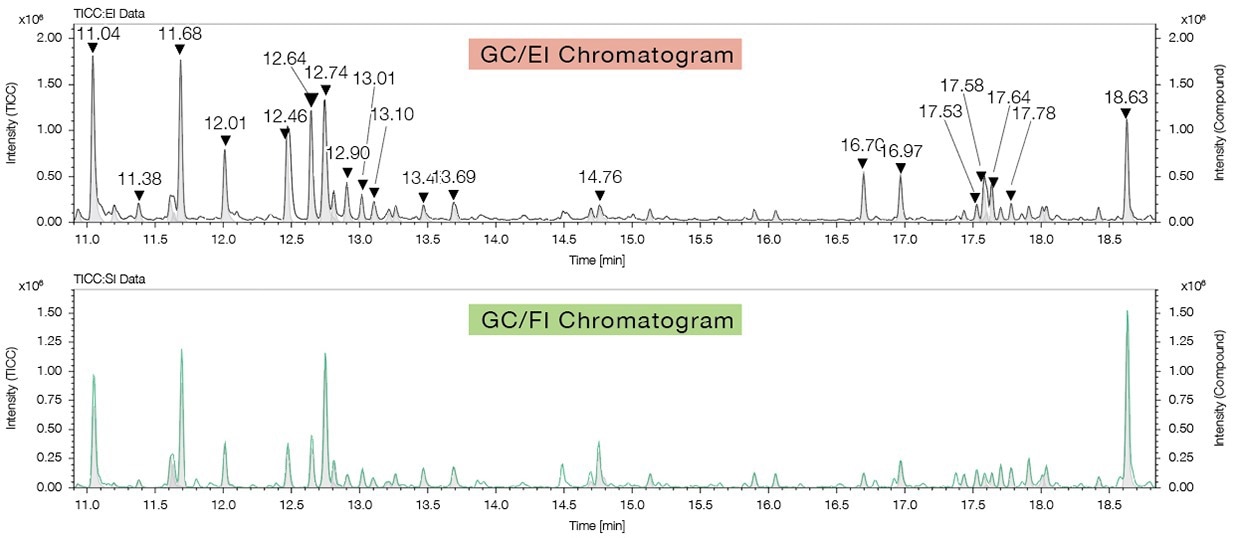
Image Credit: JEOL USA, Inc
All of these compounds consisted of structures that included methyl esters (reflecting the acrylic resin monomer structure) displayed for the higher-ranked possibilities. This data allowed researchers to estimate that all of the compounds targeted for structure analysis are acrylic resin thermal decomposition products.
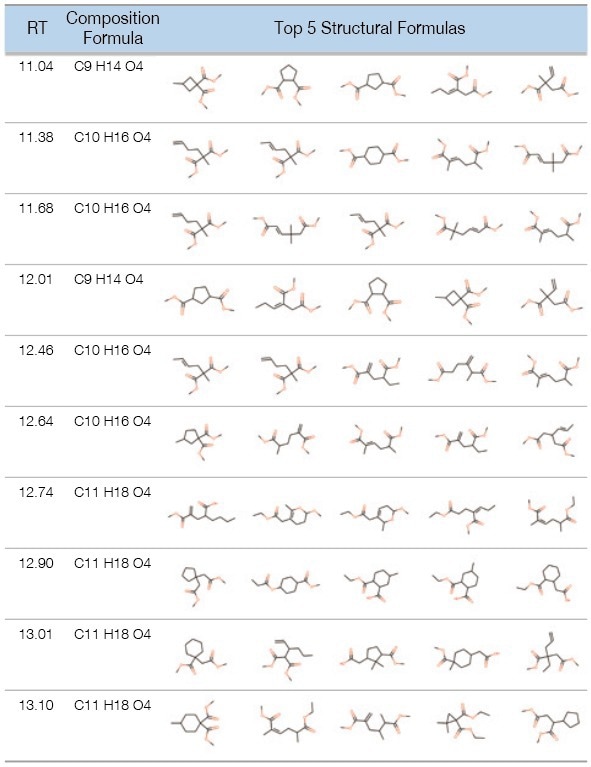
Image Credit: JEOL USA, Inc
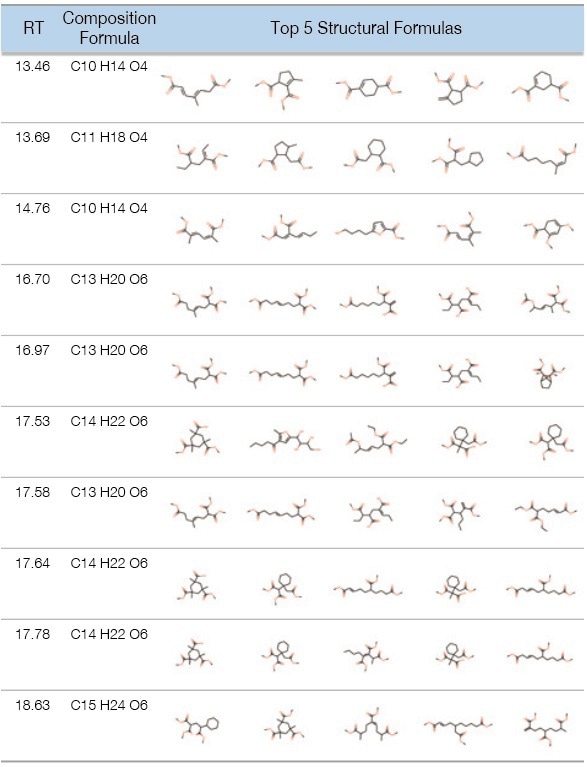
Image Credit: JEOL USA, Inc
#2 Deconvolution Detection
Chromatographic peak deconvolution is able to identify trace components that may not be obvious in the TICC as a result of the coelution of various components.
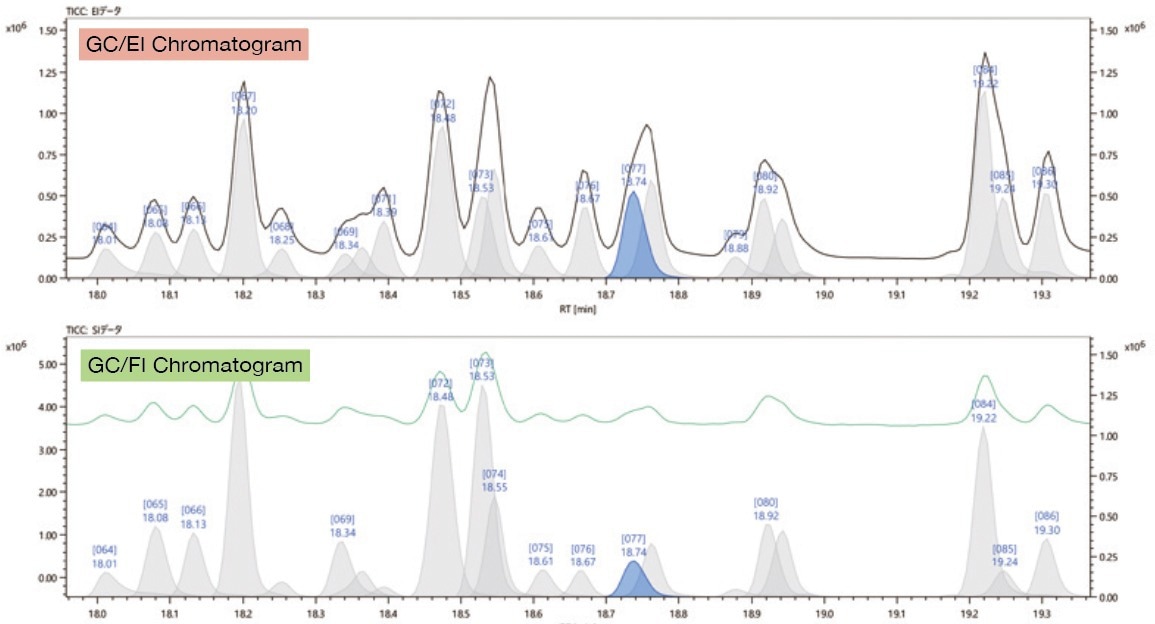
EI: black solid line: TICC, gray peaks: deconvolution peak (blue: currently selected). FI: green solid line: TICC, gray peaks: deconvolution peak (blue: currently selected). Image Credit: JEOL USA, Inc
This step streamlines the data analysis process by specifying which ions go with each compound and removes the requirement for making extracted ion chromatograms (EICs).
#3 Retention Index Qualitative Analysis
The retention index (RI) is a relative index value that is determined based on the retention times (RT) for an n-alkane standard mixture.
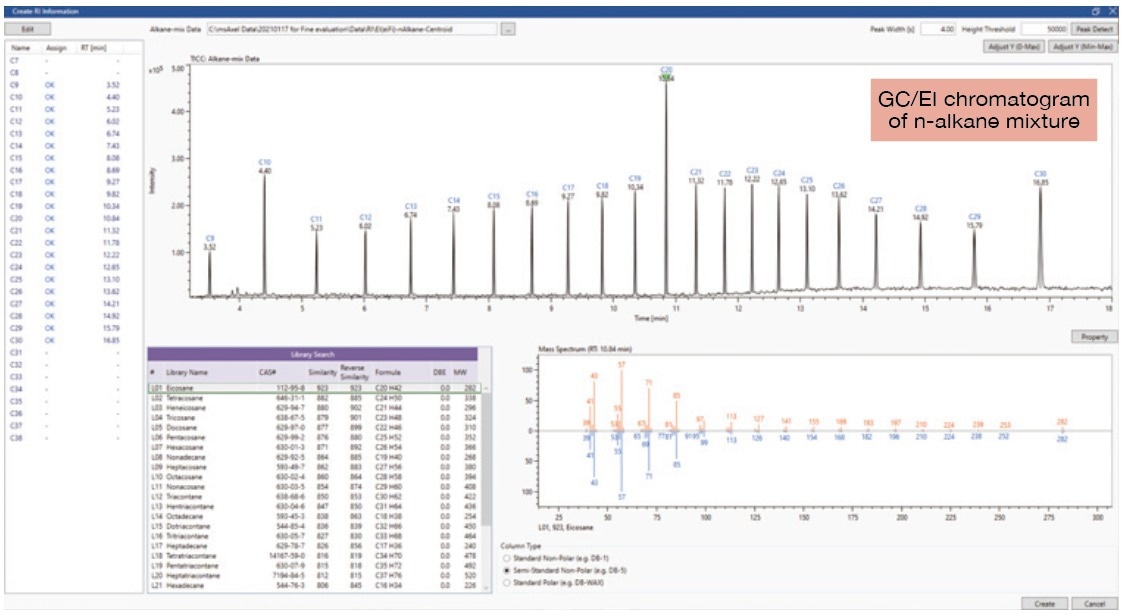
Retention Index Creation Screen. Image Credit: JEOL USA, Inc
This qualitative analysis function has been executed by shifting the RT of the target component into a RI and further comparing it with the RI value listed in the databases, etc.
Using msFineAnalysis AI, it is possible to narrow down the qualitative analysis result further with the help of the RI.
#4 Two Sample Comparison (Differential Analysis)
This function uses the reproducibility of the p-value on the vertical axis and a volcano plot which denotes the intensity ratio between two samples on the horizontal axis.
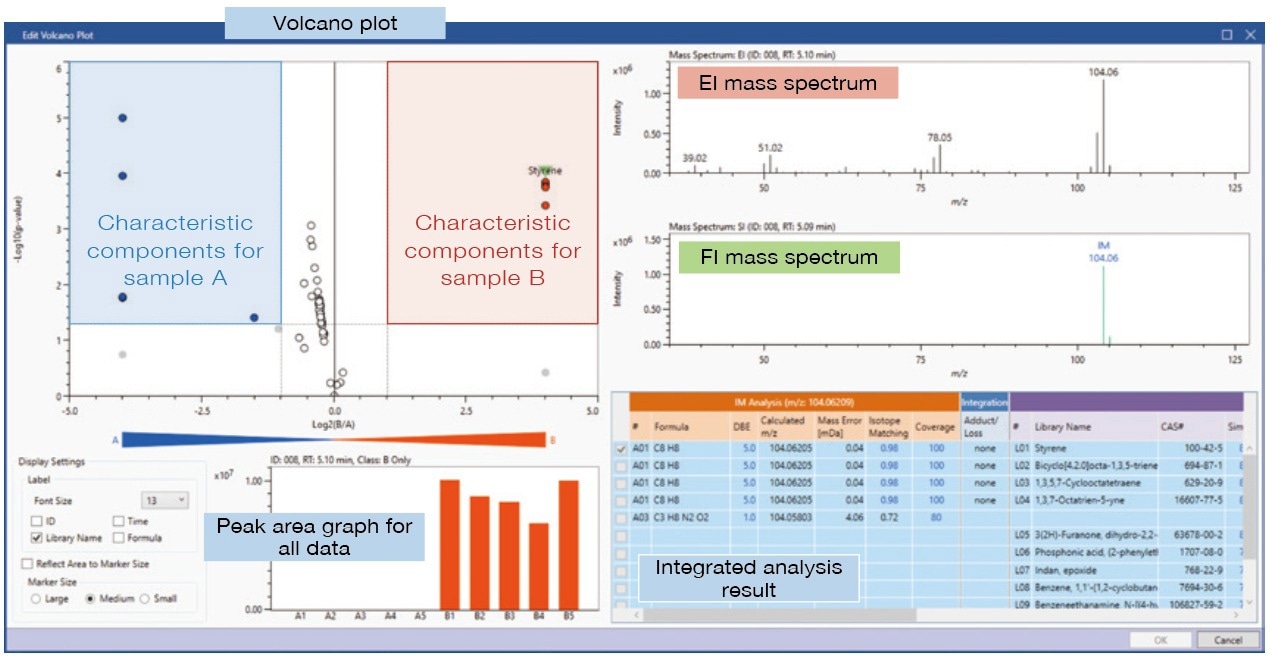
Detailed analysis – Volcano plot
(A: Reference product, B: Defective product). Retention Index Creation Screen. Image Credit: JEOL USA, Inc
This information offers visual confirmation of the different components between two samples.
For instance, it is possible to identify characteristic components in a new material by comparing it to an existing one or to confirm if a component decreases or increases when comparing a reference product to a defective one. For a two-sample comparison, it is possible to set n=1, 3, 5 for the number of measurements for each sample.
msFineAnalysis AI Analysis Flow

Image Credit: JEOL USA, Inc
Specifications
- Displaying analysis results using retention indices
- Displaying isotope pattern analysis results
- Using manual peak detection to create mass spectra
- Automatically detecting peaks and creating mass spectra
- Using deconvolution processing to create mass spectra
- Variance component analysis
- Analyzing molecular ions according to two mass spectra
- Analyzing identical components of two measurement data items
- Displaying exact mass calculation results
- Displaying measurement conditions
- Displaying NIST database search results
- AI Structure analysis
- User interface: English